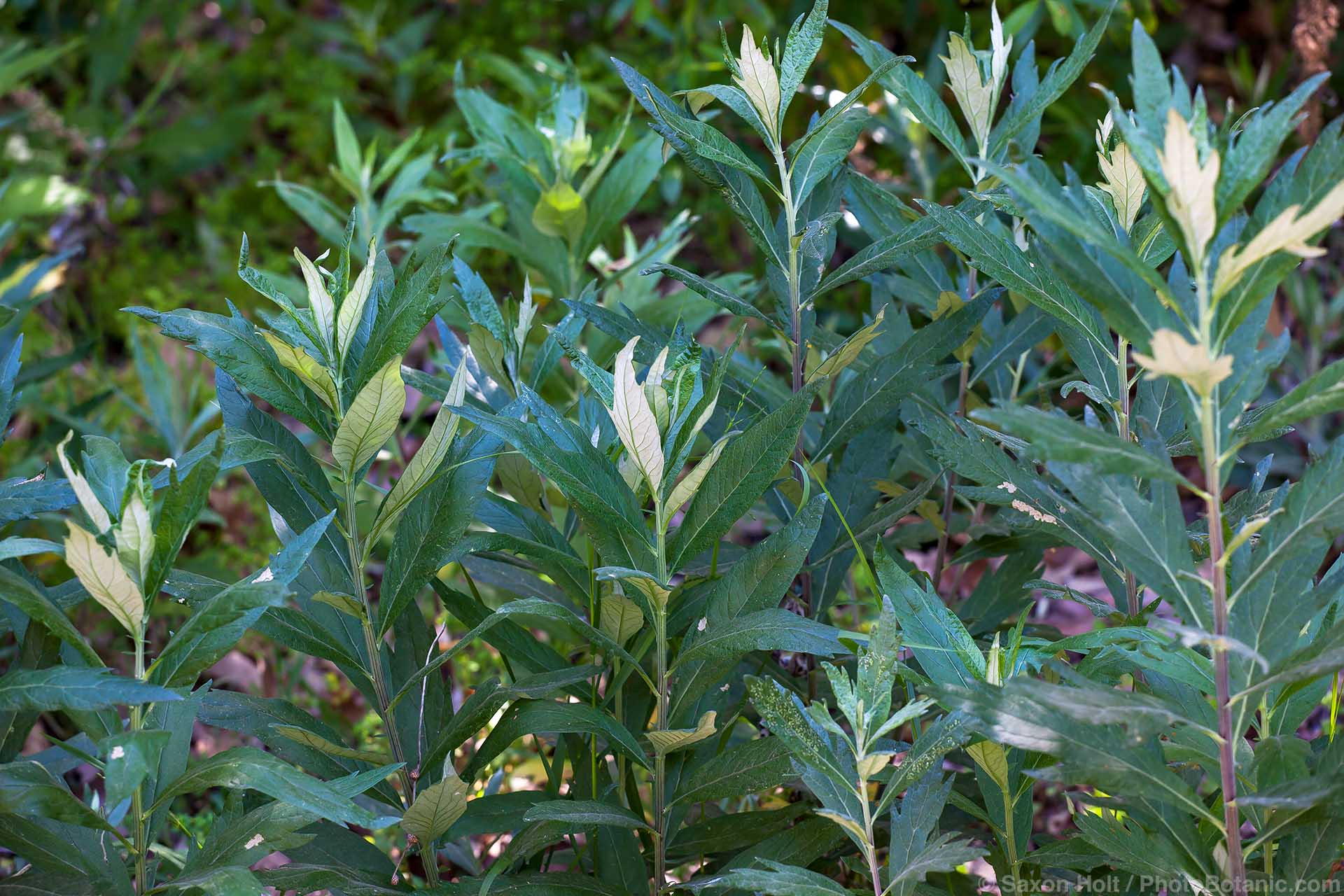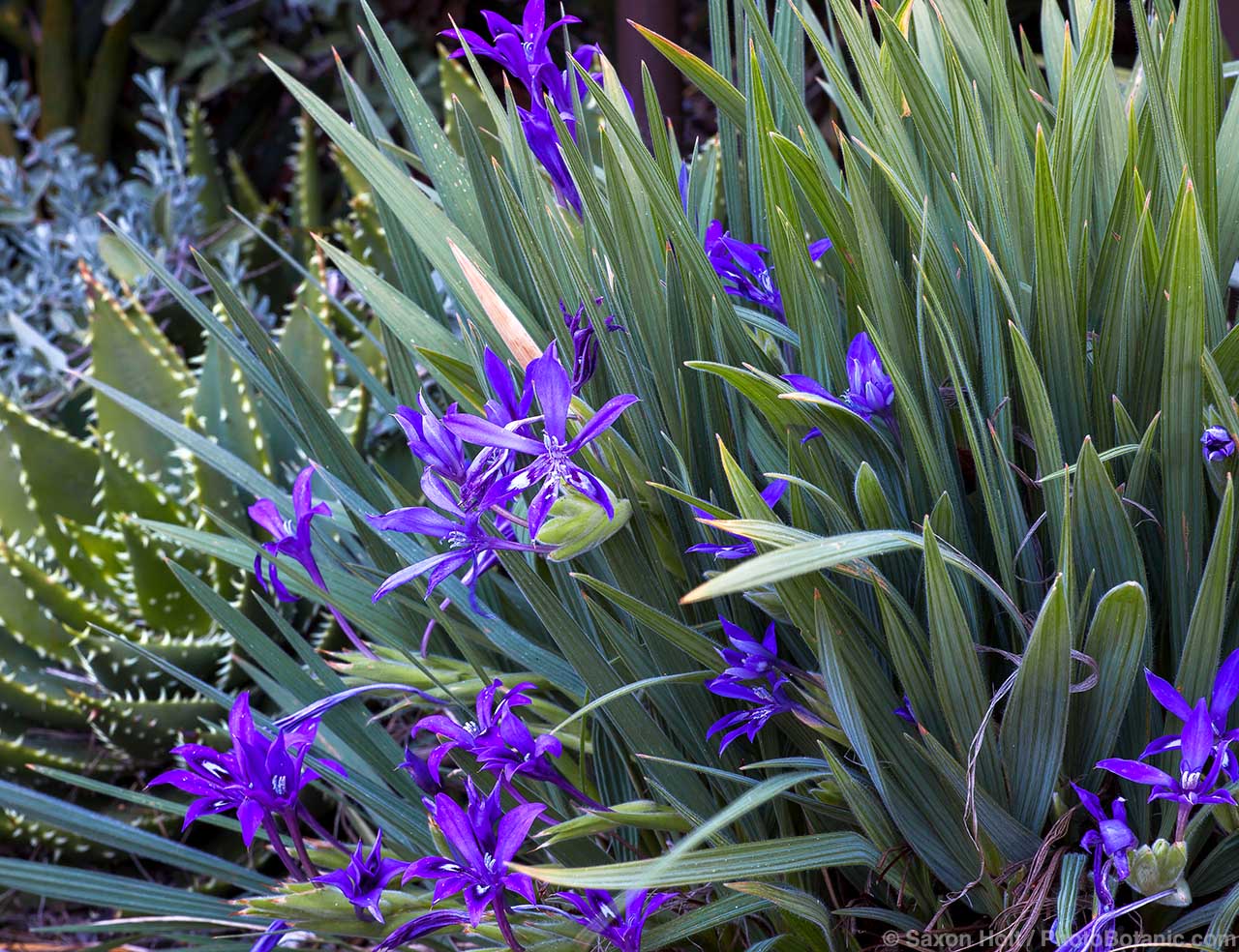Leucospermums
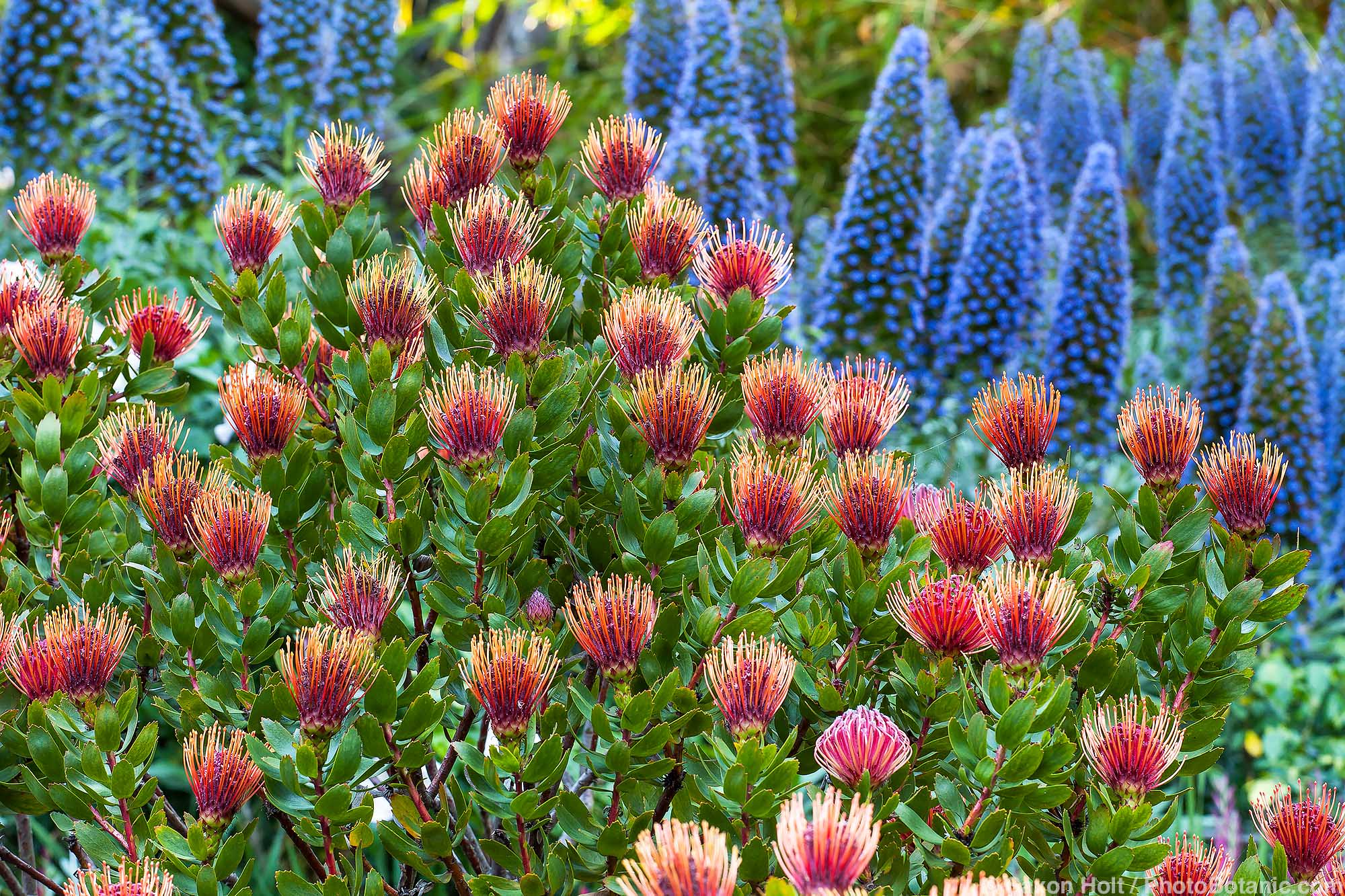
Share This!
Outside of South Africa, where almost all are endemic, leucospermums are best known for their otherworldly cut flowers. Gardeners in other mild-winter, summer-dry climates likely purchase the flowers without realizing that they might be able to grow them.
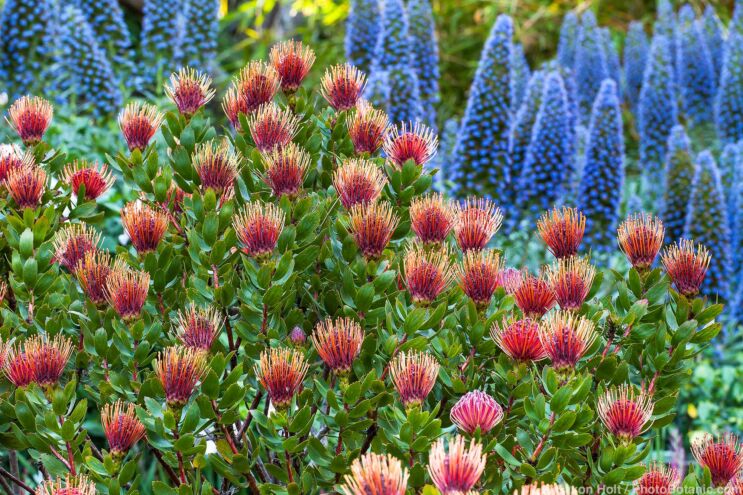
Leucospermum ‘Scarlet Ribbon’ (L. glabrum x L. tottum)
Most leucospermums are upright, evergreen shrubs or small trees 3-15 feet tall, usually with a single main stem. Some sprawl, much wider than tall, either branching from a single stem or sending up multiple stems from an underground rootstalk. Leaves are linear to oval or wedge-shaped, thick and somewhat leathery, usually with a few blunt glandular teeth at the tip.
Flowers are tiny, methodically arranged in a rounded head, with prominent styles rigidly erect or leaning, giving the plants the common name of pincushion protea. Flowers are yellow, orange, or red, some multicolored and many changing colors as they age. Peak bloom is usually late winter to early spring but can extend into early summer.
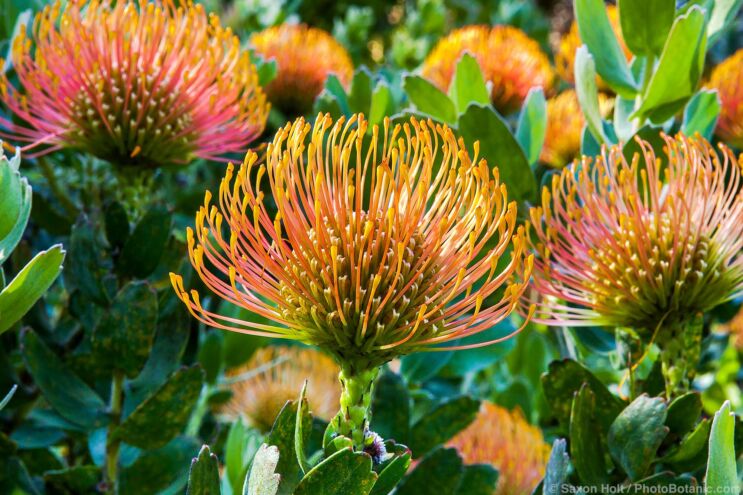
Leucospermum cordifolium ‘California Sunshine’ flowerhead
South Africa is topographically varied and within its borders are distinctly different climates and soils. Of the currently recognized 48 species and two subspecies of genus Leucospermum an impressive 30 are found naturally on or near the coast in the mild-winter, summer-dry, southernmost part of the Cape Floristic Region. Here, among fynbos vegetation adapted to summer drought, leucospermums are usually found on low-nutrient, fast-draining sands or rocky, acidic soils derived from sandstone.
Leucospermum cordifolium is native to this part of South Africa from the Kogelberg mountains, where steep cliffs drop directly into the ocean, to the Soekanysberg mountains farther east and somewhat inland. L. cordifolium is a rounded shrub 5-6 feet tall and wide, with horizontal to arching branches bearing oval to wedge-shaped green leaves and large yellow to bright orange flowerheads. This species and its many cultivars are among the most commonly cultivated leucospermums.
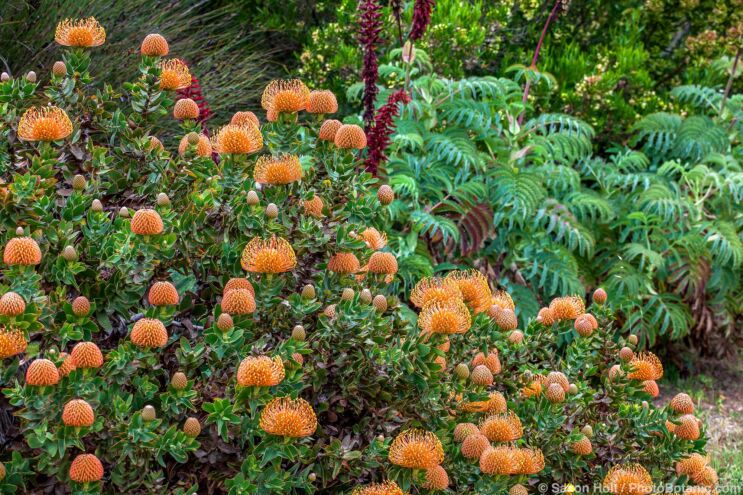
Leucospermum cordifolium is one of the most popular sources of cut flowers and garden plants.
Leucospermum glabrum is a rounded, upright shrub 6-8 feet tall and wide with oval green leaves, reddish when new, and flowerheads in multiple shades of orange. It is native to sandstone fynbos in the Outeniqua and Tsitsikamma mountains, which run parallel to the southern coastline of the Western Cape. South-facing slopes here are gentle and wet while northern slopes are in the rain shadow, steep, and facing the arid Klein (Little) Karoo. L. glabrum is found on cool, wet, south-facing slopes at elevations of 500-1500 feet. Endangered in habitat, it is widely used in the cut flower trade and many named selections and hybrids are available.
Also along the south coast, Leucospermum praecox is endemic to acidic sandy flats near Albertinia and rocky or sandy seaside dunes and forelands from Puntjie east to Mossel Bay. This is a winter-blooming upright shrub 6-8 feet tall and wide with flowers that change color from greenish yellow to orange and then to red. Leaves are overlapping and wedge-shaped, pale green and softly hairy when new, maturing to smooth, leathery, and dark green.
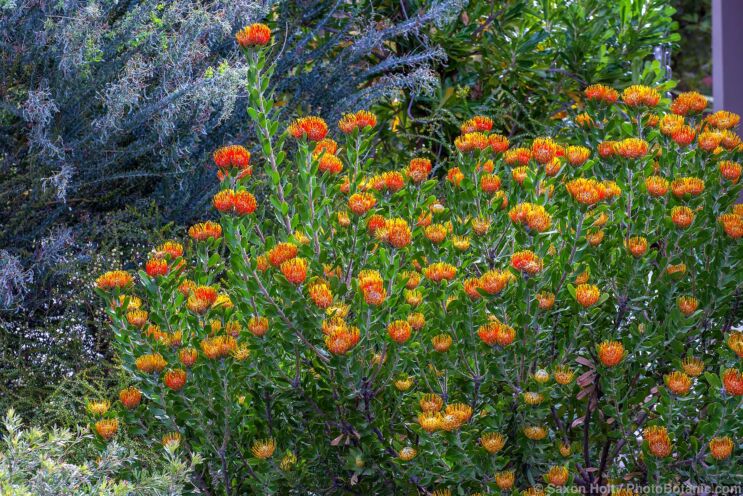
Leucospermum praecox ‘Patricia’
While most leucospermums are native to exceptionally well-drained, neutral to acidic sands where summers are dry and winters are wet, there are exceptions and these may have slightly different needs and tolerances in the garden.
Leucospermum lineare is native to granite-derived heavy clay. L. patersonii is endemic to alkaline soils in limestone fynbos. L. reflexum prefers relatively moist conditions and is usually found along streams or in other seepage areas. L. saxosum is native primarily to the summer-rainfall Chimanimani Mountains north of South Africa and on the border between Zimbabwe and Mozambique. It is found in quartzite sandstone soils, neither alkaline nor acidic.
Clearly not all leucospermums will respond to the same treatment in the garden. Most plants offered in the trade are cultivars bred or selected for particular aesthetic characteristics and they may be more or less adaptable to varying garden conditions. These are not plants for street medians or gas stations, even in southern California, and they are not suitable for the open garden in upstate New York. As with any plant, success in the garden is possible where climate, microclimate, and soils are just right.
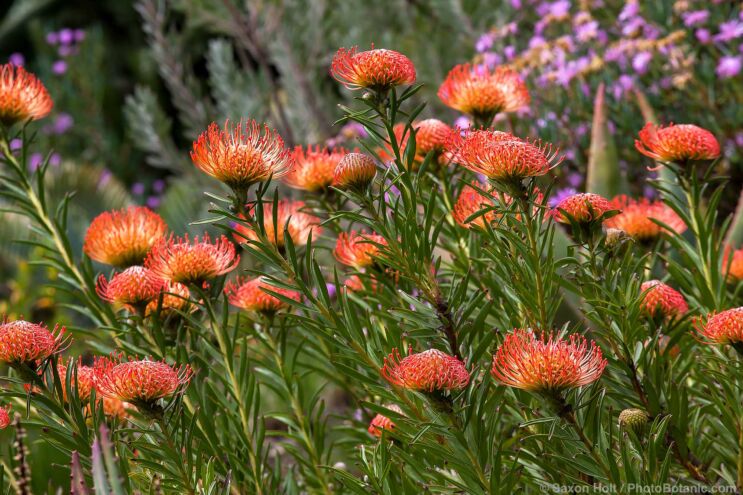
The narrow leaves of Leucospermum ‘Succession’ show the influence of L. lineare in this cross with L. cordifolium.
Most leucospermums need or prefer plenty of sun, occasional to infrequent or no summer water, and good to excellent drainage. Most can take a few degrees of frost if freezing temperatures are not prolonged. Good air circulation seems to help where winter rains are sometimes heavy. Surface roots are sensitive and should not be disturbed. As with many South African plants, fertilizers should be avoided, especially those containing phosphorus. Smaller and mid-sized varieties can be grown in large containers, at least for a few years.
Share This!
Related Articles
By: Nora Harlow
By: Nora Harlow
By: Nora Harlow



